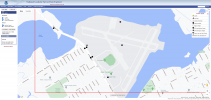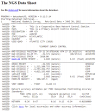I’m interested in your use of the Emlid Reach RS 2 and wondering how close the “known point” (you referred to) is to the area you are flying? I’m thinking you’re using the known point as a control point such as used in mappping. How do you confirm the geo location of your known points? What do you do if there are no known geo points in the area you fly?
To answer your first question, my known point can be any distance from my flight area since I am sending the corrections out over the internet as NTRIP, but you ideally want your corrections to be coming from a Base that is within 5 km. As distance increases so does possible error to the tune of 1mm for every km distance.
No, the known point is not a control point. The known point is where I setup my RS2 as a base. And as a base it needs to know its exact coordinates so that it can send out corrections either through NTRIP (Internet) or Lora (Long Rang Radio - Line out sight - For a rover to collect control points).
There are a few ways to obtain a known point.
The most accurate is to use an NGS monument with a low standard deviation.
Here is a link to the NGS map.
National Geodetic Survey Data Explorer
Here are screenshots of the map up close and an example of a monument with a low standard deviation and as a bonus uses Geoid 18 which is the newest geoid available.
Map of monuments

Monument Datasheet showing specifications.

This datasheet shows the coordinates in NAD83(2011) and an Ellipsoid, geoid and orthometric height.
Using the Emlid Reach RS2 in Base Mode, I would input the NAD83(2011) coordinates in from this monument (known point) and now my RS2 can send corrections out to a rover (either an RTK drone or another Emlid RS unit to collect control points).
You can use this monument to setup a new known point if you have another RS unit.
Another way to get a known point is to make your own. Find or place something in the ground that you can always find and reoccupy. (Rebar, spike etc.)
Place your RS2 on this point and log RINEX data for 10 hours.
Use Emlid's free Emlid Studio and its PPK (Post Processing Kinematics) workflow to obtain the coordinates for the point you are occupying. You would also need to download free CORS (Continually Operating Reference Station) RINEX logs for PPK.
or
take these RINEX logs and upload them to NGS OPUS Link:
OPUS: the Online Positioning User Service, process your GNSS data in the National Spatial Reference System
OPUS will then email you the coordinates.
If there are no known points in the area, I will make my own using the above.
Don't forget to check with your state DOT as some states have free NTRIP access. I am in NJ and we do not have this luxury.
The Emlid RS2 has a lot of cool new features.
You can either send corrections over the internet through NTRIP (Need an LTE sim card or wireless Hotspot)
or
You can use their new Local NTRIP which has you connect the RS2 and your drone controller to the same wireless Hot Spot and then the RS2 sends NTRIP over this local Wifi connection (This has a limited range of 10 to 20 feet).
Emlid has its own PPK software for free, Emid Studio.
Emlid has Reachview 3 for collecting control points with a rover.




